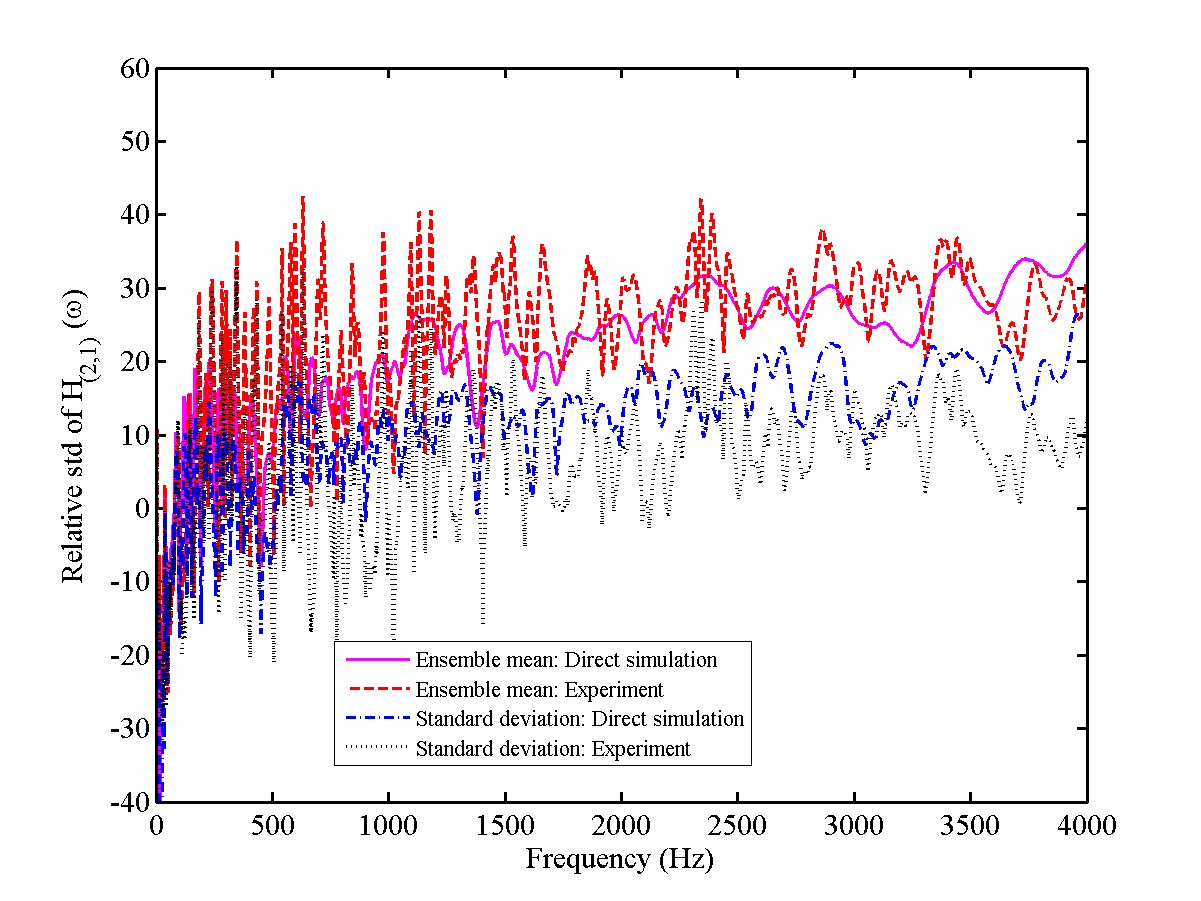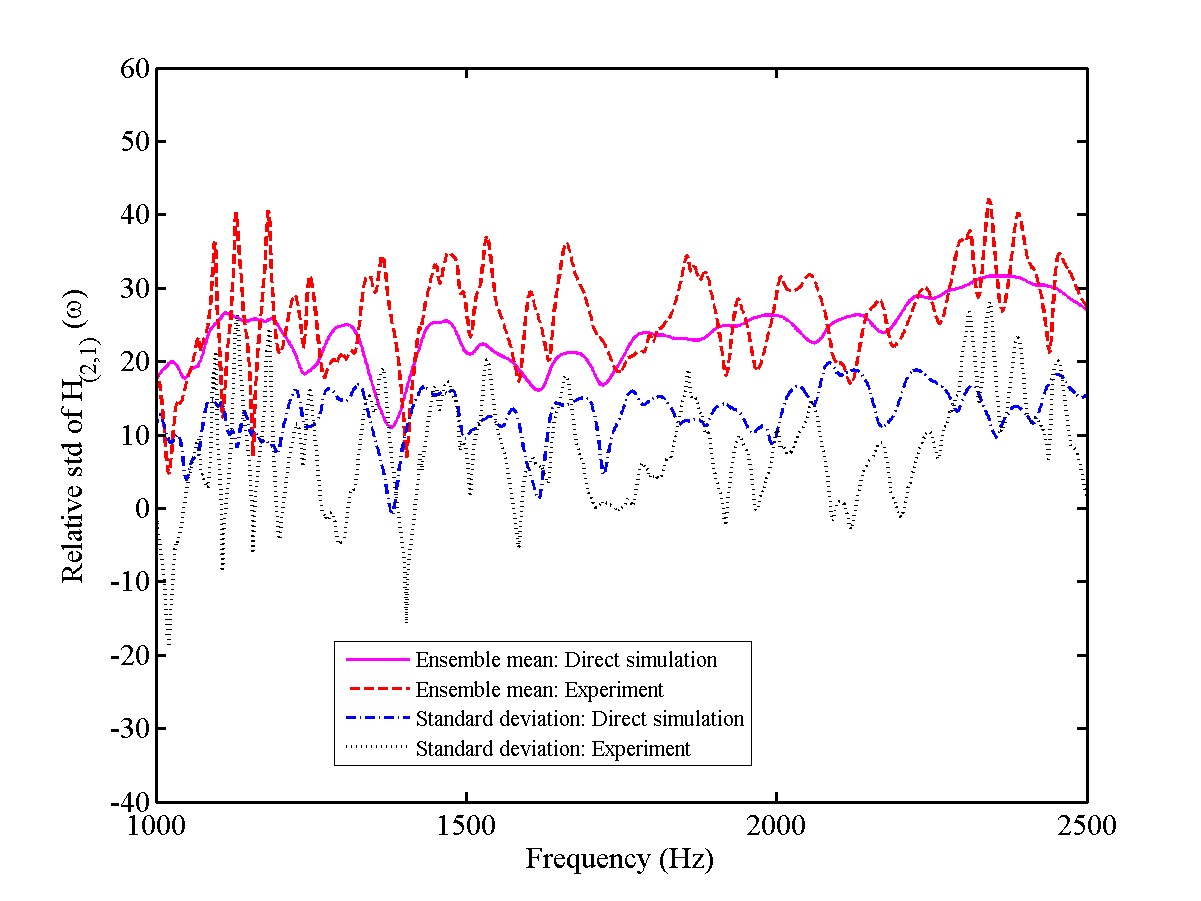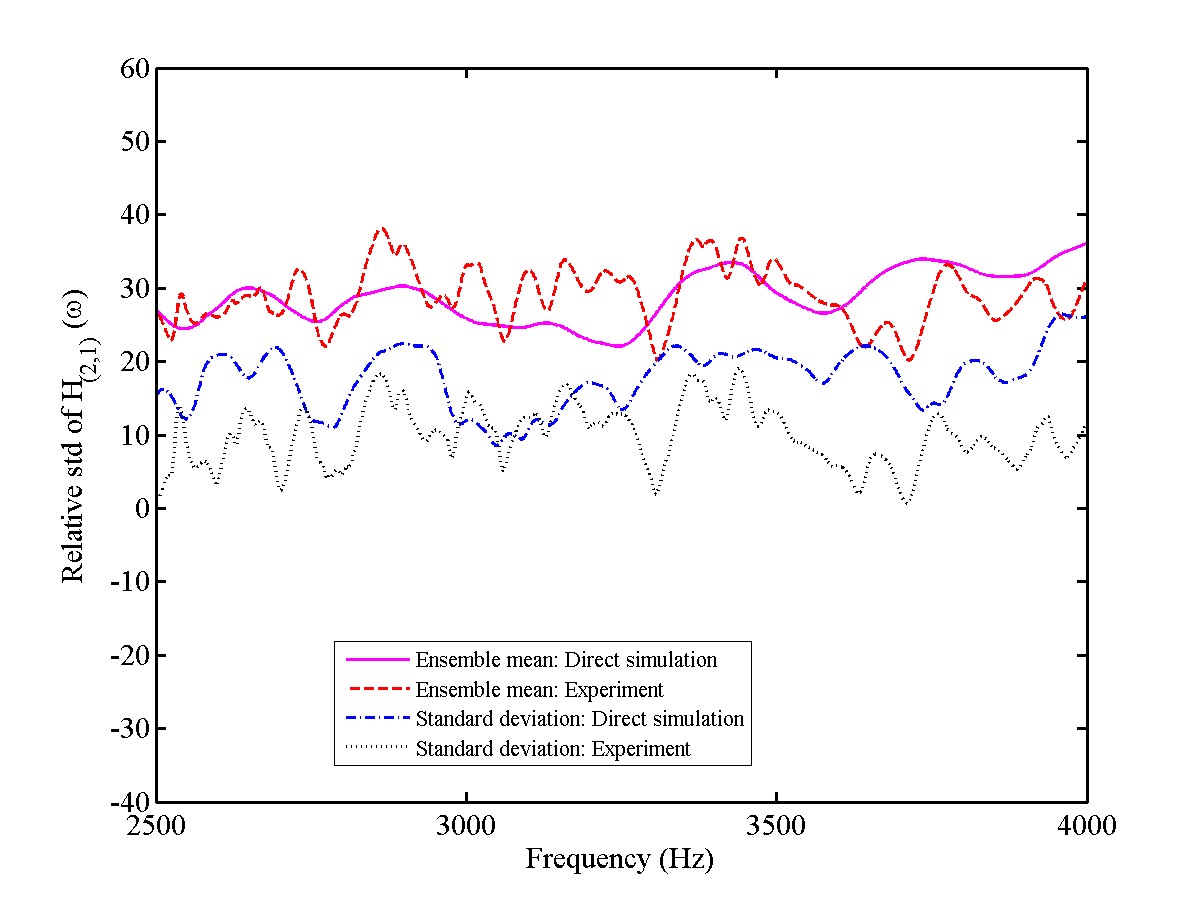Uncertainty quantification is becoming an integral part in model validation of complex engineering structures. In the companion paper an experiment with 12 masses placed at random locations on a fixed-fixed beam is described with the objective of quantifying uncertainty in a simple dynamical model. From the modeling point of view, this experiment simulates random mass distribution. In this paper an experiment involving a cantilever plate with 10 randomly placed spring-mass oscillators. The oscillating mass of each of the 10 oscillators about 1% of the mass of the plate. This experiment is aimed at simulating the problem of 'unmodelled dynamics', which in turn results in randomness in both mass and stiffness matrices. One hundred nominally identical dynamical systems are created and individually tested. The probabilistic characteristics of the frequency response functions are discussed in the low, medium and high frequency ranges. The variability in the amplitude and phase of the measured frequency response functions is compared with numerical Monte Carlo simulation results. The data obtained here may be useful for the validation of uncertainty quantification and propagation methods in structural dynamics.
A comparison of the ensemble mean and standard deviation of the amplitude of the plate at point 1 (23 cm from the left end) using direct Monte Carlo simulation and experiment for different frequency ranges is shown below. |
 |
| Amplitude across the frequency range | Amplitude in the Low-frequency range |
 |
 |
| Amplitude in the Medium-frequency range | Amplitude in the High-frequency range |